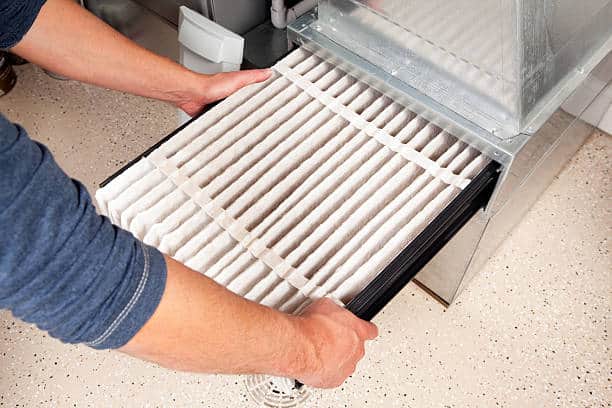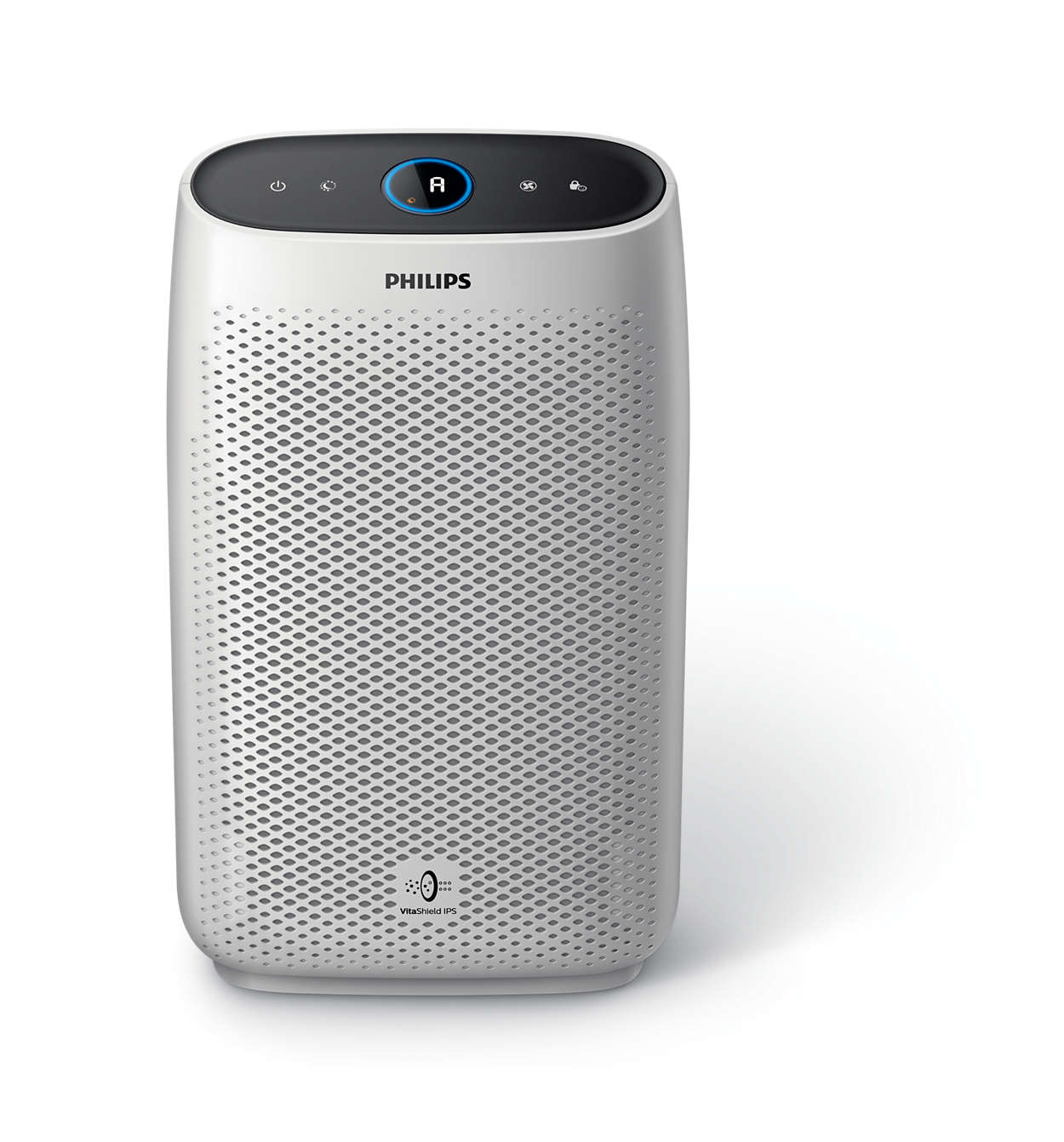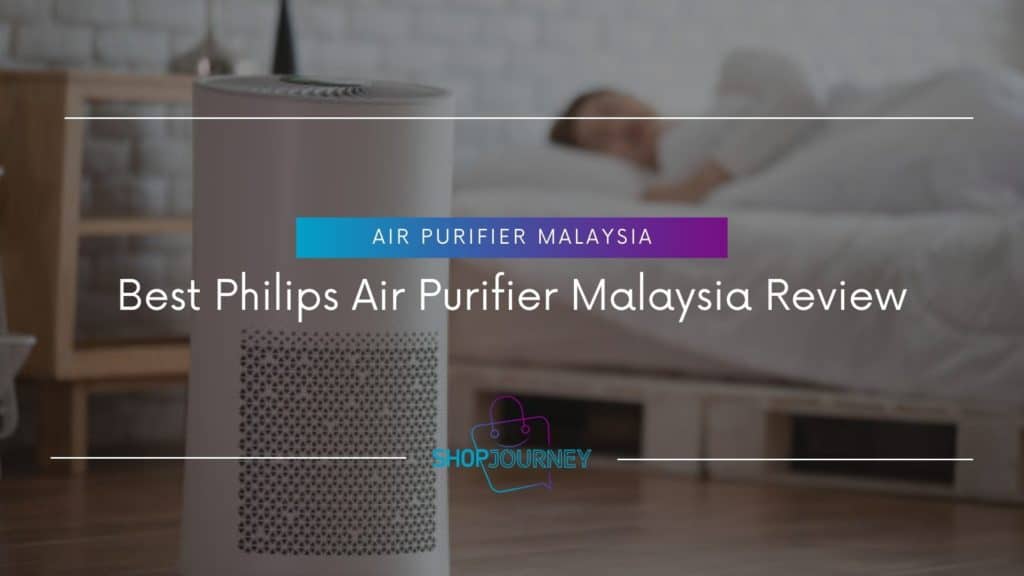In previous times, using air purifiers was not seen as a necessity. They were so expensive that not many could afford them. But today, there are many reasons to improve air quality. Most especially with the increasing amount of pollutants that are there in the air and with the pandemic itself. This has made manufacturers produce cheaper and effective air purifiers for houses, cars and closed spaces to ensure we breathe in healthy air.
How do air purifiers work? Quite simple. Air purifiers suck in air, trap pollutants in the air and give out cleaner air, improving overall air quality in a closed space. Often, I advise people to get air purifiers in their homes most especially if their homes have bad odours, dust and smoke. Smoke, dust and odour are what air purifiers help to trap and produce breathable air for you. One last important thing air purifiers remove is allergens which can cause allergic reactions.
How do air purifiers remove allergens? How do they trap dust and smoke? In this article, we’ll answer all your air purifier questions, and take you through our Philips air purifier review. Philips air purifiers are among the best air purifiers in Malaysia.
What Types of Air Purifiers Are There in the Market?
There are different types of air purifiers with each with in-built capacities to filter air and give us healthy air. However, not all air purifiers suck in air for purification, some use other methods. It is for this reason that there are different types of air purifier filters. It is important to note that some air purifier models — Philips purifiers included — on the market have multiple filters. Below, we carefully highlight the different types of air purifiers in the market by examining their filters.
HEPA Technology
The HEPA filter (High-Efficiency Particulate Absorbing) in an air purifier helps to filter the dirty air. Here is how HEPA technology works. HEPA filters are made via fibreglass fibre mats. When HEPA air purifiers suck in air, they get trapped in these fibre mats.
Sometimes, a room’s air contains ultra fine particles that can negatively affect our health. There is also something called the nanoprotect HEPA filter. These fibre mats have a small passable size of 0.3 microns making it difficult for dust, allergens and pollen to pass through. HEPA technology air purifiers can produce up to 99.7% clean air. It is for this reason that they are used in hospitals and very clean environments. After a fixed period, you’ll need to buy replacement filters.
Activated Carbon Technology
The activated carbon filter works just like the HEPA technology. It sucks in the air and gives out breathable ones. Before carbon is activated, it is treated with oxygen. Treatment of carbon with oxygen activates the carbon giving it the capacity to readily absorb gases.
When air purifiers with activated technology suck in air, they absorb gases, dust particles and other gases. In fact, they can absorb particles causing odours.
Carbon-activated technology is so efficient that you can treat the carbon, then taper it to meet your needs. That is, you can treat the carbon to absorb certain gases in your home. Generally, an activated charcoal filter is used in places where odor removal is most appreciated.
UV Technology
The UV technology is quite different from other types of air purifiers in that it does not suck in air as others do. It functions as a reaction that occurs when titanium dioxide is exposed to UV light.
When airstreams come in contact with this reaction, bacteria, moulds and other harmful particles are neutralized. Because UV technology emits very high-intensity UV Rays it can break down carbon-based substances. It is why this particular type of filter is used in the medical sector. The quality of healthy air UV technology produces is highly dependent on the amount of air exposed to the UV rays.
Negative Ion
Negative ion air purifiers function on the principle of static electricity. They produce negatively charged ions known as anions into the air. These anions then attach themselves to air particles, gases, and moulds, making them heavier than usual. As a result, they fall to the ground leaving the atmosphere.
Two major things about negative ions are that they do not suck in air and they are used primarily in commercial air filtration.
Ozone
Ozone air purifiers are the least common units in the market. Ozone has three oxygen molecules with one that is particularly unstable. This third oxygen molecule can attach to substances to be stable. It is on this principle that the ozone air purifier works on.
Ozone air purifiers emit unstable oxygen into the air and it attaches to pollutants in the air. This way, the pollutants get neutralized and killed eventually. It is important to note that ozone air purifiers target only specific pollutants.
Features of an Air purifier
Air purifiers are easy to understand provided you take your time to study them. Most times, people assume air purifiers only filter air once they are on and do not bother checking other features that it has. Looking at the features of an air purifier, we shall be looking at how these features affect the function of the air purifiers.
Light Sensor
The light sensor part of an air purifier is probably the first you’ll see when you see an air purifier. Most times, it is in front of the air purifier showing different colours at different times.
Several people do not understand the colours of an air purifier. The colours on an air purifier indicate the state of air in the room. That is healthy air and unhealthy air. Here is a list to help you remember.
- Blue : Good air
- Blue purple: Fair.
- Purple red: unhealthy.
- Red: Very Unhealthy.
It is worthy of note to know that when you switch on your air purifier, the light sensor appears red for the first five minutes. This does not signify unhealthy air. Instead, it means your air purifier is booting itself and gauging the air in the surrounding area. After five minutes, the light sensor changes its colour to whatever is the state of the air around it.
Filtration Process
The major function of an air purifier is to produce healthy and breathable air by filtration. The best air purifiers in Malaysia suck in the air then filter them. This is how they work.
Different air purifiers have different sizes of the room they are meant for. For the best results, place an air purifier in a room that fits its size. Once placed, the air purifier sucks in air and traps allergens, harmful gases, pet dander, odour, dust particles, mould and volatile organic compounds (VOCs). However, only HEPA and the activated carbon type of air purifier trap things, others use other methods like ionization and ozoning.
Odour Reduction

Not all air purifiers reduce odours but the best air purifiers in Malaysia reduce odours in the air. The same way air purifiers filter air is the same way they trap odour; the air is sucked in and they trap molecules causing the odour.
However, of both types of air purifiers that filter air, only the carbon-activated types that can trap odour molecules and reduce odour in a room. It is important to note that air purifiers do not completely eliminate odours but only reduce odours in a room.
For air purifiers that trap odour, some factors affect their efficiency. First, the amount of carbon present. If there is not enough carbon, the air purifier may not trap enough molecules causing the odour. Thereby, leaving an adequate number of molecules in the room to still carry the odour.
Also, if there is a rapid change in humidity, the carbon filter can off-gas causing the back release of trapped odour molecules into the room.
Benefits of Using Air Purifiers
Using air purifiers has loads of benefits you may not know of. Not only do they purify the air in the surrounding, but they also reduce odour in your room. Aside from these, there are other benefits of using air purifiers. Below, we carefully discuss the benefits of using air purifiers.
Air Purification
Air purification is the major benefit of using an air purifier. The air purifier sucks in your air, trapping dust, allergens and other impurities in the air making it safe for breathing.
Still discussing air Purification, it is important to discuss the importance of an air purifier in the pandemic. Since microorganisms are airborne, using an air purifier helps to trap them or neutralize them. Hence, you won’t have to worry about contracting the virus.
Odour Reduction
It is easy for an air purifier to reduce odour in the home or the car. Very important, air purifiers do not eliminate odours in the car or home, they only reduce them.
Also important is the effect of air purifiers on smoke. If you smoke or have anyone who does, buying an air purifier can help but not as much as you want it. The air purifier will only reduce the amount of smoke you have in the room or car. Hence, leaving some stains on your wall or in the car.
Allergy Prevention
One major component of polluted air is allergens. Allergens are small molecules, small enough to be carried by air that causes allergic reactions. During filtration, air filters remove or trap allergens in the air making available breathable air.
Can increase Life Expectancy
Polluted air contains chemicals that block your pulmonary and respiratory system. In fact, they can be that bad and can cause blockage in your blood-brain barrier. If this happens, the chances of having cognitive disorders are high, thereby reducing your life expectancy.
Things to Consider Before Buying an Air Purifier
Before you decide to buy an air purifier, there are things you are to consider and these things are beyond its physical features. Although physical features are part, they are not the only things to consider before buying an air purifier. Here are four things to consider before buying an air purifier.
Room Size
As a newbie, in choosing an air purifier, you must consider the room size before purchase. Different types of air purifiers work for different sizes of room.
Before delving much, you should know about ACH( Air Change Per Hour). ACH is the number of times an air purifier can filter the entire volume of air in a room. For some air purifiers, their ACH is four times, while for others it is less or more.
If you are an asthma patient, you must get air purifiers with an ACH of four. This way, you are sure that the air is properly filtered removing any microorganism that causes an allergic reaction.
For better understanding, here is a guide for the types of air purifiers to use for different room sizes.
Small: Air purifiers in this category are designed for personal rooms or rooms of about 299 square feet. This type of air purifier can be used for cars too.
- Medium: these air purifiers are for rooms with about 300 to 699 square feet.
- Large: These air purifiers can cover large sizes of 700 to 1900 square feet.
- Whole house: if your house is bigger than 1900 square feet, you definitely will be needing air purifiers that can fit the whole house.
Frequency and Usage
Frequency and room size almost fall into the same category. Some articles group them while some do not. But we are not grouping them. The frequency will refer to the number of times that the air purifiers can filter the entire area in a treated area.
Averagely, an air purifier can filter air four times but this is not the same for all. Ensure you know your room size and its frequency before purchasing any air purifier.
Budget and Price Factor
As you will expect, the price factor will be included. Depending on features, the price for air purifiers differs. Some purifiers are more expensive because of their features.
For instance, some air purifiers have Wifi connections while some just use direct current. If you will be buying an air purifier with Wifi connections, obviously you’ll be spending more. So, general features are important as they affect the price.
Brand
There are different brands of air purifiers in the market. The brands are so many that as a newbie, getting the best brand may be challenging.
Some brands are more about the names than the features. So, they are more expensive because they are selling brands. But with the Philip air purifier, you are sure to get your money’s worth.
Philips Air Purifier Review
For Your Space
1. Philips Air Cleaner [AC2887/30]
The Philips Air Cleaner is the first in this air purifier review. It is a room-sized air purifier that comes with a two months international manufacturer warranty. This model has what Philips calls an “aerasense” function that senses more minute particles in the air and causes the air purifier to adjust to filter them out.
It is almost noiseless when put on sleep mode, easy to use and compact. The Philips Air Cleaner AC2887/30 has 3 modes of function like the general mode, bacteria mode and the allergen modes to give you clean air.
Features
- 3 Auto mode options
- Aerodynamic design.
- Aerasense technology.
- Vita shield IPS technology.
- Night sensing mode.
Pros
- Noiseless.
- Has 99.97% filtration efficiency.
- Can adjust its filter to filter smaller particles.
- Has a night mode sensing mode for bedrooms.
- Has a good air quality monitor
Cons
- Quite heavy
2. Philips Series 1000i Air Purifier [AC1215/30]

The Philips air purifier series was built especially with an anti-allergy setting. It can filter the air and trap any allergens in the air to improve the room’s air quality. Its advanced nanoprotect HEPA filter provides complete protection from harmful airborne pollutants and it has a high clean air delivery rate. This model has a child control safety feature as well.
Features
- CADR 270
- Filter HEPA series.
- Night sensing mode.
- Touch UI
Pros
- It filters 99.7% of the air.
- Fan speeds include a turbo mode
- Child lock
- Auto-purification mode.
- Night air protection.
Cons
- No silent mode
3. Philips Air Purifier – Series 2000 (AC2936/33)
The Philips Air Purifier – Series 2000 (AC2936/33) can filter and use UV technology to improve a room’s air quality. This filter has three layers that ensure proper filtration, and it comes with a green AC infrared dust bin. This model has a sleep mode for quieter function, and manual speed settings that include a turbo mode.
Features
- Aerasense is technology.
- Vitashield.
- Light control panel.
- DC design and finishing.
Pros
- Light and easy to use.
- Has a turbo mode
- Has filtration parts for filtration.
- 2 years warranty period.
Cons
- Its warranty period is not beyond 2 years.
- Quite pricy
4. Philips Air Purifier 800 Series [AC0820/30]
This model of air purifier is built to specifically filter viruses and bacteria. The Philips Air Purifier 800 Series can also improve sleep quality. This Philips air purifier is suitable for increasing the air quality of smaller rooms. It also features a long filter life so you don’t need to think about replacing the filter for a while.
Features
- CADR: 190m³h
- High energy efficiency rate.
- 0.003 ultra-fine particles removal.
- 99.9% filtration rate of viruses and bacteria.
Pros
- It is noiseless
- Able to filter bacteria and viruses.
- A standby power consumption of 0.5
- Two years service guarantee.
- Long filter life
Cons
- Not suitable for larger rooms
5. Philips Air Purifier – Series 3000i [AC3033/30]
The Philips Air Purifier – Series 3000i (AC3033/30) is one of the best air purifiers in Malaysia. It can instantly filter air without making much noise. Its intelligent auto purification feature takes its clean air delivery rate to a higher level. It offers Wi-Fi connection, so you can connect to your smart devices and control its settings from there. The Philips Air Purifier – Series 3000i (AC3033/30) is user-friendly with an easy-to-use control panel.
Features
- Innovative design.
- Auto-ambient lightning.
- Smart filter status indicator.
- 3 layer filtration parts.
Pros
- It has an easy control system because of its Wifi connections.
- It is noiseless, so sound sleep is guaranteed.
- It has instant purification features.
- It easily cleans up bacteria and viruses.
Cons
- Pricy model
For Your Car
1. Philips GoPure 3211 Car Air Purifier [GP3211 – GP321X1]

You definitely will need air purifiers for cars too, not only your homes. Our best recommendation is a small-sized portable air purifier. We present the Philips GoPure 3211 Car Air Purifier. This compact air purifier can filter exhaust fumes and microorganisms from your car.
Features
- Filter PM 2.5 fine particles.
- Easy installment on any parts of the car.
Pros
- Comes with a year warranty period.
- Can filter car exhausts from your car.
Cons
- Its warranty does not exceed a year.
2. Philips GoPure 5211 Car Air Purifier [GP5211]
Another common car air purifier is the Philips GoPure 5211 Car Air Purifier. With this model, you can successfully filter not only dust but also nitrogen and carbon fumes in the car. With the Philips GoPure 5211 Car Air Purifier, be sure of healthy-breathable air free of allergens.
Features
- CADR for TVOC 11m3/hour
- CADR for PM2.5: 16m3/hour
- formaldehyde 6m3/hour
- CADR NO2/SO2: 13and 7.9m3/hour
Pros
- It comes with a year warranty period.
- It is noiseless.
Cons
- Its warranty doesn’t exceed a year.
3. Philips GoPure 7101 Car Air Purifier [GP7101 – GP710BLKX1]
The last on our list and certainly not the least. The Philips GoPure 7101 has a high clean air delivery rate. This car air purifier can remove So2 and No2 from exhaust fumes. It also removes allergens from the car, all to ensure you have breathable air.
Features
- CADR toxic gases: 14m3/hour
- CADR for PM2.5: 22.9m3/hour
- CADR toxic gases: 14m3/hour
- App-controlled iOS and Android.
- CADR NO2/SO2: 18 and 15m3/hour
- App-controlled iOS and Android.
Pros
- Auto-purification features.
- Easy installment.
- Can filter harmful components from car fumes
Cons
- The warranty doesn’t exceed a year.
Alternatives
1. KL SEND Air Purifier
It comes with an inbuilt UV lamp light with a touch control system making it easy to control. It uses the HEPA filter technology to remove odour, particles and microorganisms. Finally, it has a long filter life, so you don’t need to buy replacement filters too often.
Pros
- Touch control system.
- HEPA filtration technology.
- Long filter life.
Cons
- UV technology is potentially harmful
2. KL SEND HEPA Air Purifier With Remote Control
This air purifier comes with a control system that lets you control things like fan speed remotely. Like many other purifiers, it is equipped with a HEPA filter. It has a 4-stage filtration system to give you very clean air, despite being pretty affordable.
Pros
- A touch screen control system.
- HEPA filter technology.
- 4-stage filtration
Cons
- Relatively small coverage space.
Final Verdict
Air purifiers let you breathe in air with minimal microorganisms, harmful gases, allergens, specks of dust and smoke. It is however essential that we point out that air purifiers do not eliminate smoke. Instead, reduce it to the barest minimum.
We hope that you have enjoyed this air purifier review and found it helpful in your search of the best air purifier Malaysia offers. As far as Philips air purifier units go, we think that the Philips Air Cleaner [AC2887/30] is the best option for your home, and the Philips GoPure 7101 Car Air Purifier is the best option for your car.
Frequently Asked Questions
1. Which Phillip air purifier is the best?
Each Philips air purifier has significant benefits to offer. The best model would be dependent on what you are hoping the air purifier will accomplish.
2. Is a Phillip Air purifier safe?
Yes, a Philips air purifier is safe. They don’t consume too much electricity, and some even have child safety precautions built-in.
3. How does a Phillip Air purifier work?
A Philip Air purifier works by sucking in air and trapping unwanted elements in its filter. Then releasing breathable clean air into the room. The Philips air purifier improves overall air quality in a particular closed space.




